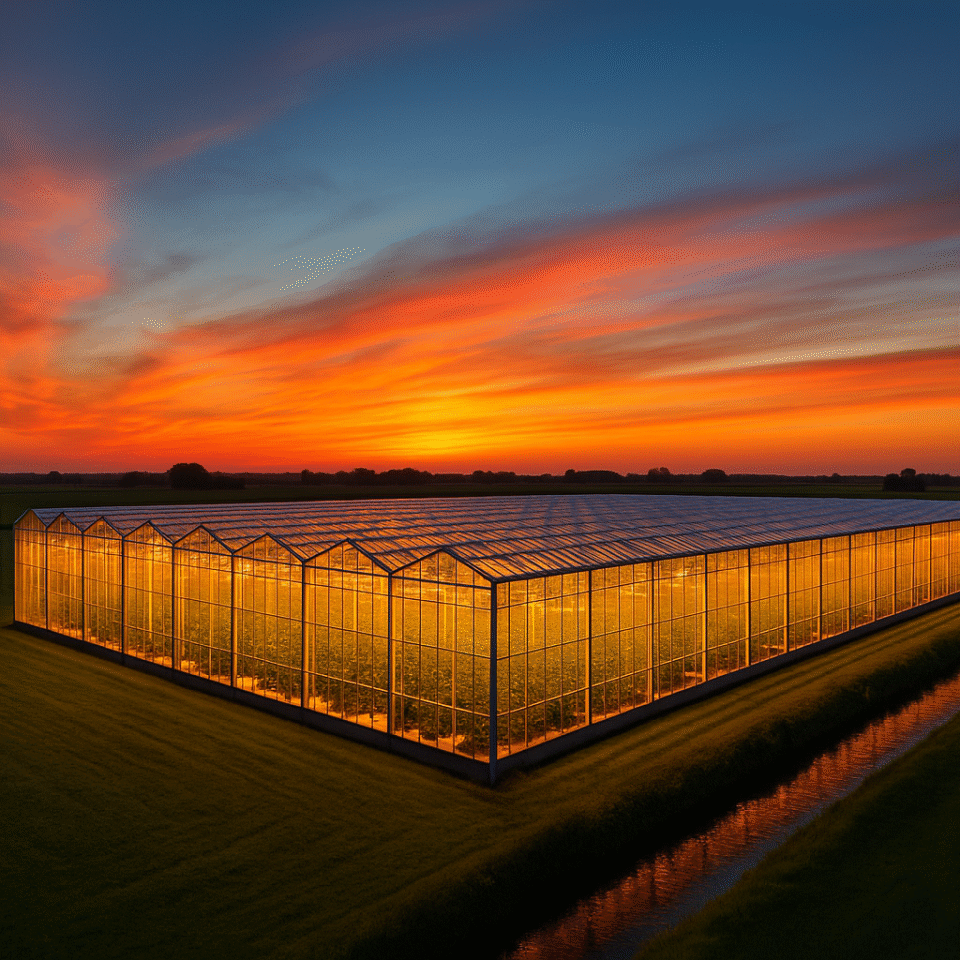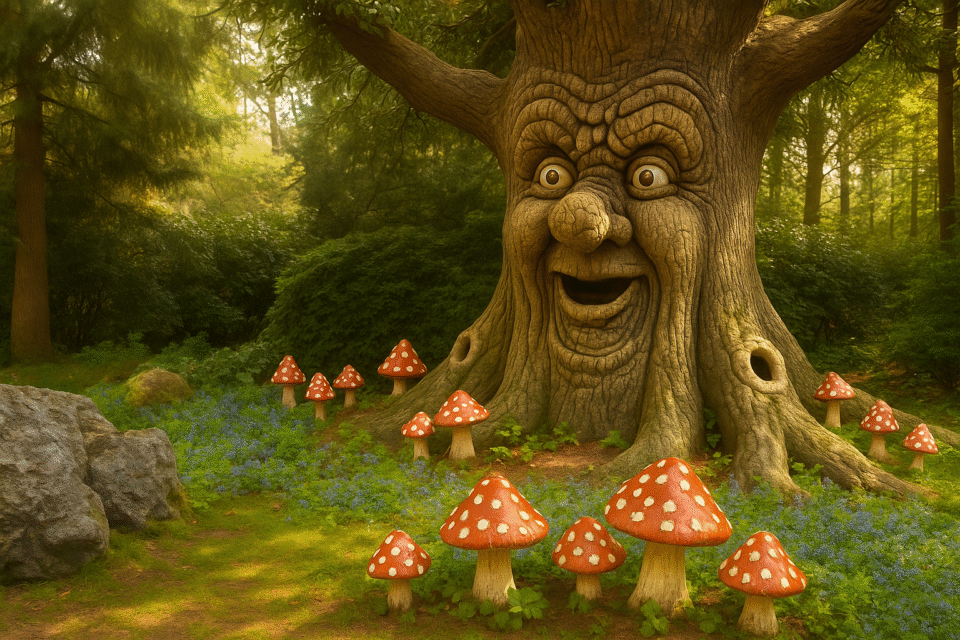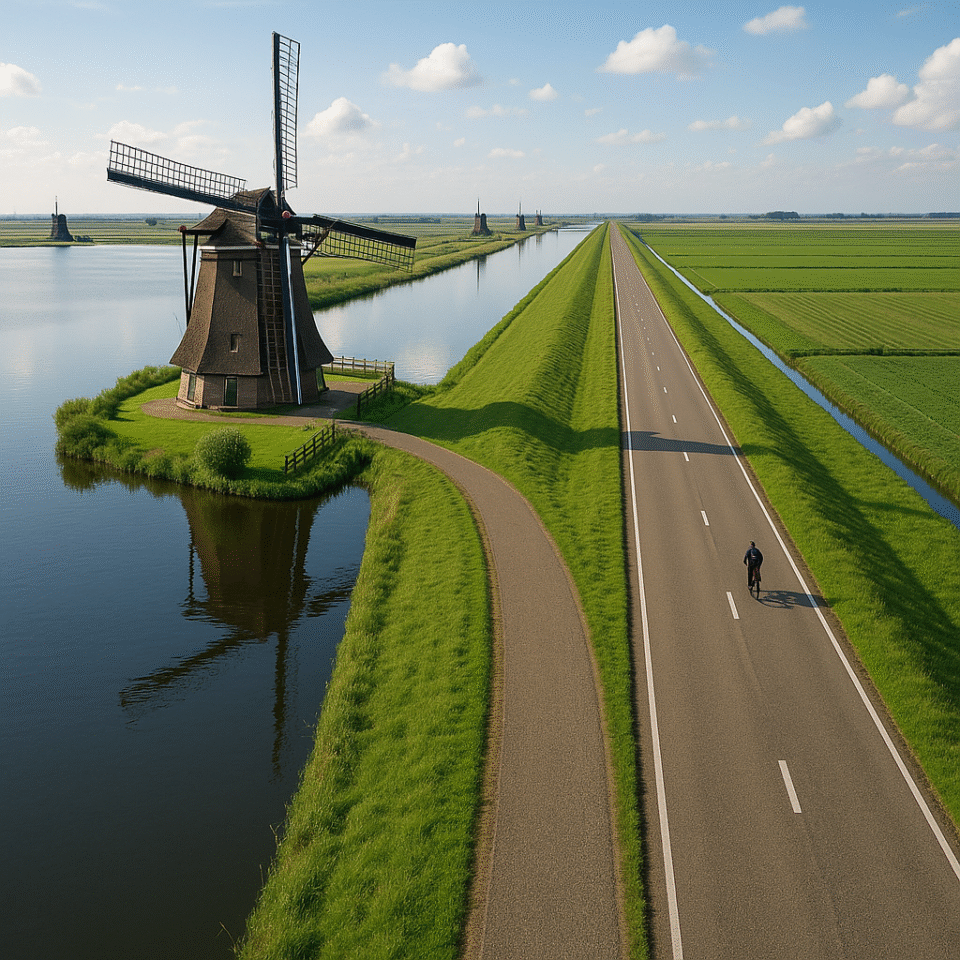A tiny country’s agricultural revolution and what it means for your Dutch experience
The Netherlands, roughly half the size of Maine, has become an agricultural superpower through innovation, efficiency, and resourcefulness. For Americans curious about Dutch life, this agricultural prowess offers fascinating insights into the national character.
When you picture the Netherlands, windmills, canals, and vibrant tulip fields likely spring to mind. What might surprise you is that this compact European nation consistently ranks as one of the world’s top agricultural exporters.
Small Nation, Agricultural Giant
Despite its modest footprint—with a land area of approximately 41,865 square kilometers and only about 54% dedicated to agriculture—the Netherlands was the third-largest agricultural exporter globally in 2023, with exports valued at $134.15 billion. That’s right behind agricultural powerhouses like the United States and Brazil.
How does a country half the size of Maine achieve this? The Dutch focus on high-value products like flowers, live plants, dairy, meat, and advanced horticultural produce. They also excel as traders, with a significant portion of “Dutch” exports being re-exports—goods imported, sometimes processed, and then efficiently shipped out again.
The Port of Rotterdam, Europe’s largest port, serves as a critical logistics center for fresh produce and agrifood products. This world-class infrastructure, combined with centuries of trade experience and a strategic location, allows the Netherlands to function as a sophisticated global food hub.
Innovation: The Dutch Secret Weapon
The answer to Dutch agricultural success lies in innovation. They’ve transformed farming into a high-tech science that constantly pushes boundaries.
Greenhouse Wonders
Visit the Dutch countryside and you’ll encounter vast expanses of shimmering glass—advanced greenhouses equipped with climate control, sophisticated irrigation, and LED lighting for year-round cultivation. These marvels of engineering give growers complete control over growing conditions.
The productivity is staggering: vertical farming techniques within these controlled environments can produce up to ten times the yield of traditional farming. Tomato production can reach around 50 kilograms per square meter, with some high-tech greenhouses achieving yields of 250 to over 600 tonnes per hectare.
These systems also bring sustainability benefits, using up to 90% less water than conventional agriculture and significantly reducing pesticide usage. Some greenhouses even recycle CO₂ from nearby factories to accelerate plant growth—a striking example of Dutch circular thinking.
Data-Driven Fields
Beyond greenhouses, Dutch farmers leverage data gathered from satellites, drones, and soil sensors to optimize every aspect of farming. This precise approach allows farmers like Jacob van den Borne to achieve potato yields of over 20 tons per acre—more than double the global average—while reducing water dependency by up to 90% and eliminating chemical pesticides in his greenhouse fields. Dutch agriculture shows impressive efficiency in water management, with greenhouse systems being particularly frugal. While yearly fluctuations occur based on weather conditions (for instance, water usage returned to normal levels in 2021 after several drought years), the overall trend shows Dutch farmers achieving more crop production with increasingly efficient water usage.
The Innovation Ecosystem
At the heart of this success is Wageningen University & Research (WUR), consistently ranked as the world’s number one agricultural university. Surrounding WUR is Food Valley, a vibrant cluster connecting cutting-edge research with over 3,000 companies and 15,000 experts dedicated to shaping the future of food.
This “Golden Triangle” of collaboration between government, research institutions, and private industry isn’t accidental but a deliberate national strategy that gives the Dutch a continuous competitive advantage.
Beyond Tulips: Dutch Agricultural Diversity
While flowers might be the most famous Dutch export, their expertise extends much further.
Dairy Excellence
The Dutch dairy industry is a global force with approximately 1.57 million dairy cattle producing around 14.3 billion liters of milk annually. The Netherlands ranks as the world’s second-largest cheese exporter, with companies like FrieslandCampina and Royal A-ware leading the way.
Innovation thrives here too, with automated milking systems, precision livestock management, and even plant-based dairy alternatives.
Horticultural Powerhouse
The Netherlands commands an impressive 44% share of worldwide trade in flowers and live plants, with around 75% of the world’s flower bulbs originating here. But those high-tech greenhouses also produce enormous quantities of vegetables, making the Netherlands the largest fresh vegetable exporter and the largest tomato exporter globally.
This focus on high-value, knowledge-intensive products maximizes the economic return from every square meter—a smart adaptation to geographical constraints.
Sustainability Challenges and Solutions
The famous saying, “God created the Earth, but the Dutch created the Netherlands,” speaks to their history of land reclamation and water management. This resourcefulness extends to their approach to sustainability.
Dutch farmers have achieved drastic water use reductions through innovations like closed drainage systems and subsurface irrigation. The national vision for “circular agriculture” aims to close nutrient loops, minimize waste, and use all resources with maximum efficiency.
Some Dutch greenhouses even capture and reuse runoff and condensation, creating nearly closed-loop systems.
However, the intensity that drives Dutch productivity has created environmental challenges. The “nitrogen crisis” from intensive livestock farming and fertilizer use impacts biodiversity and water quality. Agriculture contributes around 18% of national greenhouse gas emissions, and the high land-use intensity puts pressure on natural habitats.
In response, the Dutch government has introduced controversial measures, including farm buyouts and emission caps, sparking widespread protests among farmers. These debates reflect a broader tension: the very systems that made Dutch farming so efficient are now being reimagined for long-term sustainability.
What This Means for American Expats
For Americans living in the Netherlands, this agricultural dynamism has tangible impacts on daily life.
Fresh, Affordable Produce
You’ll benefit from the remarkable availability and quality of fresh produce. Supermarkets and outdoor markets brim with high-quality, locally grown fruits, vegetables, and dairy products year-round. Many expats find groceries, especially fresh produce, more affordable than in the U.S.
Visible Innovation
The spirit of agricultural innovation permeates the food landscape, with farm shops (boerderijwinkels) offering direct-to-consumer sales and the “local for local” (lokaal voor lokaal) trend gaining traction. The Netherlands truly feels like a “living field laboratory” for food and agriculture.
Dutch Innovation in Daily Life
Living in a country that leads in such a fundamental area offers a unique window into the Dutch character: ingenuity, pragmatism, efficiency, and an ability to turn constraints into advantages. It’s a daily reminder of the country’s capacity for innovation and forward-thinking approaches to challenges.
A Legacy of Ingenuity
The Netherlands’ position as an agricultural titan stems from centuries of battling the elements, pursuing knowledge, collaborating, and embracing innovation. This tiny nation has not only learned to feed itself but has become a crucial supplier to the world.
For Americans considering life in the Netherlands, this success story illustrates a country that is historically rich, culturally charming, and deeply engaged in shaping a sustainable future. The same ingenuity that reclaimed land from the sea now strives to ensure that Holland’s mighty harvest continues to nourish the world for generations to come.








